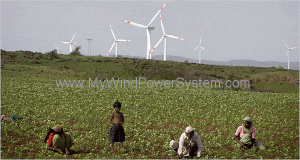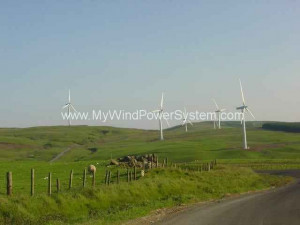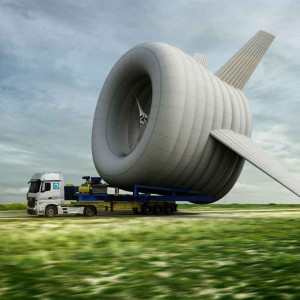The government of Pakistan is in process of implementing no less than 30 different wind power projects as it plans to move from carbon-polluting electricity production to a much eco-friendlier set of power production. There are two major wind power projects with capacity of 106.4 MW that have been implemented and are supplying electricity to Pakistan’s national grid. Three further projects which have between them a total capacity of 150 MW, have had their finances settled and are under construction. These projects are expected to achieve a Commercial Operation Date (COD) later this year. That’s not all- there are 11 wind power projects with a cumulative capacity of 550 MW which should achieve COD by the second quarter of 2016.
One of the first Modern Pakistan wind farms was established in Jhimpir, near Karachi, in April 2009. It began with five Turkish-made gearless VENSYS 62 wind turbines each producing 1.2 MW. Pakistan is a country that needs energy for industrial growth but power generation capacity hasn’t kept pace, resulting in widening of the demand – supply gap in energy.
Power is mainly generated through thermal power plants, which constitute almost 68% of total power generation capacity and Pakistan has become dependent on imported fossil fuels. This has added to the energy insecurity of the country as fossil fuel reserves are depleting and there have been an international trend of higher prices for these energy resources. Wind power, an alternative to fossil fuels, is plentiful, renewable, clean and of course produces no greenhouse gas emissions during operation.
Pakistan has a high-quality wind resource especially in the coastal areas of Sindh and Baluchistan. The Gharo-Keti Bandar Wind Corridor spreading 60 km along the coastline of Sindh province and more than 170 km deep towards the land alone has a potential to generate more than 60,000 MW of electricity. In order to harness the wind potential in Pakistan and encourage the investment in wind power projects, the government of Pakistan has offered various incentives which includes attractive tariff rates, availability of land on cheaper rates, wind risk, guaranteed power purchase, zero rated import duties on the equipment and exemption of income tax & sales tax.
There is also a need to have better coordination between the institutes involved for efficient and timely completion of the projects. Lack of infrastructure (roads, utilities, security etc.) in the areas of wind power is also a hindrance in the development of the sector. The area selected for wind farms should be connected through road networks which are necessary for transportation of equipment and machinery to the plant site. The Government should also encourage the manufacturing of the wind power equipment in Pakistan. Two key components of wind turbine could be manufactured locally; the wind turbine tower and the turbine blades. By local manufacturing there will be saving of time and freight costs as both of these component require special logistics arrangements. It will also generate the employment opportunities for the local population. It is also important that the general public should be properly educated about the benefits of wind energy through awareness campaigns. People should be informed that wind power projects shall create employment in the area and contribute to the prosperity of the population.
In conclusion wind energy presents a considerable opportunity for Pakistan to obtain significant part of the future energy needs, and it seems serious about pursuing this now.




